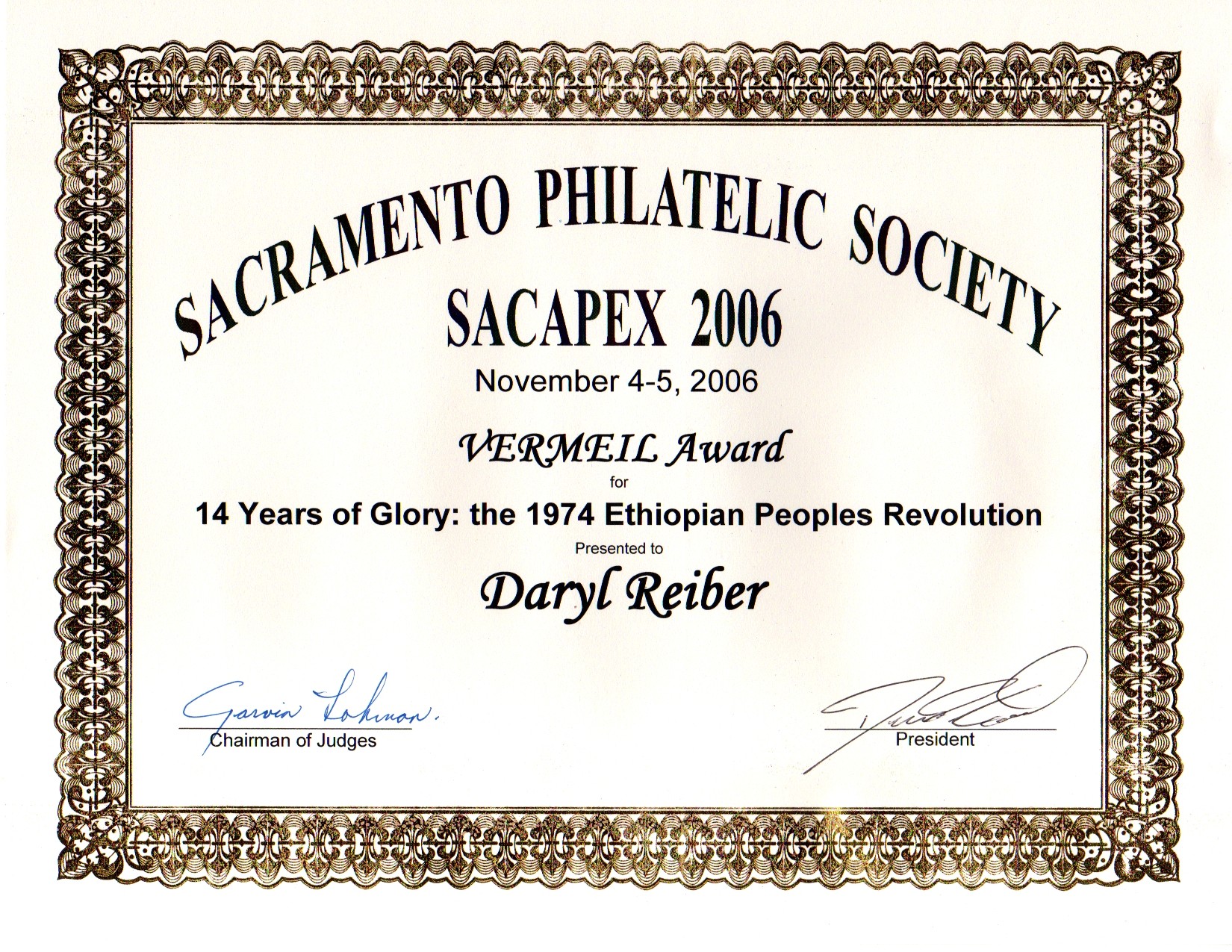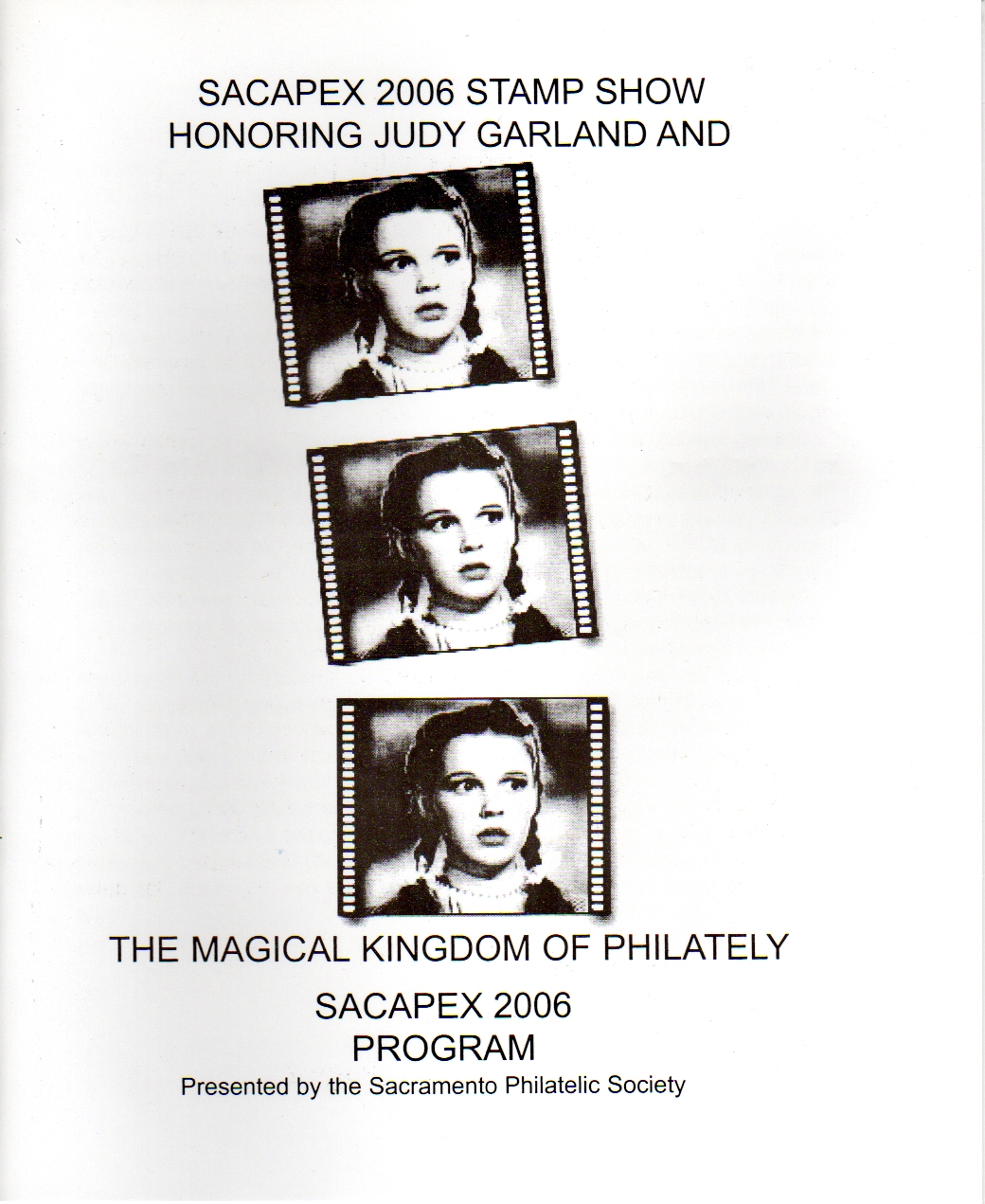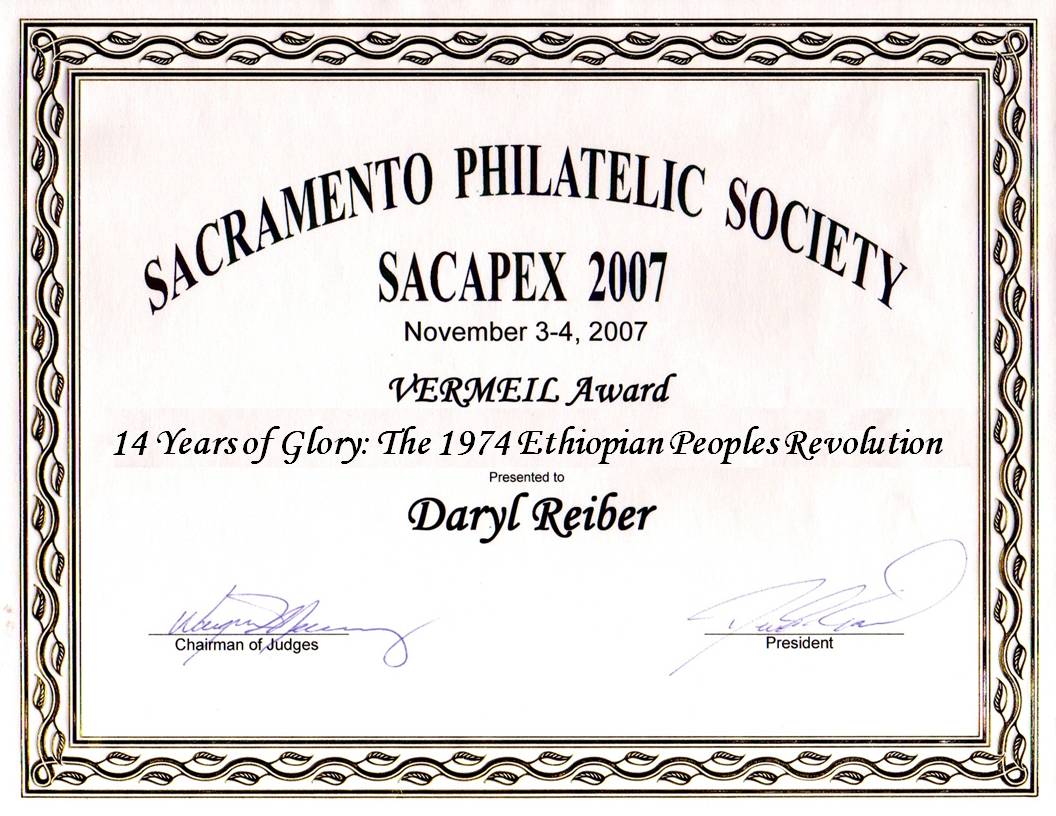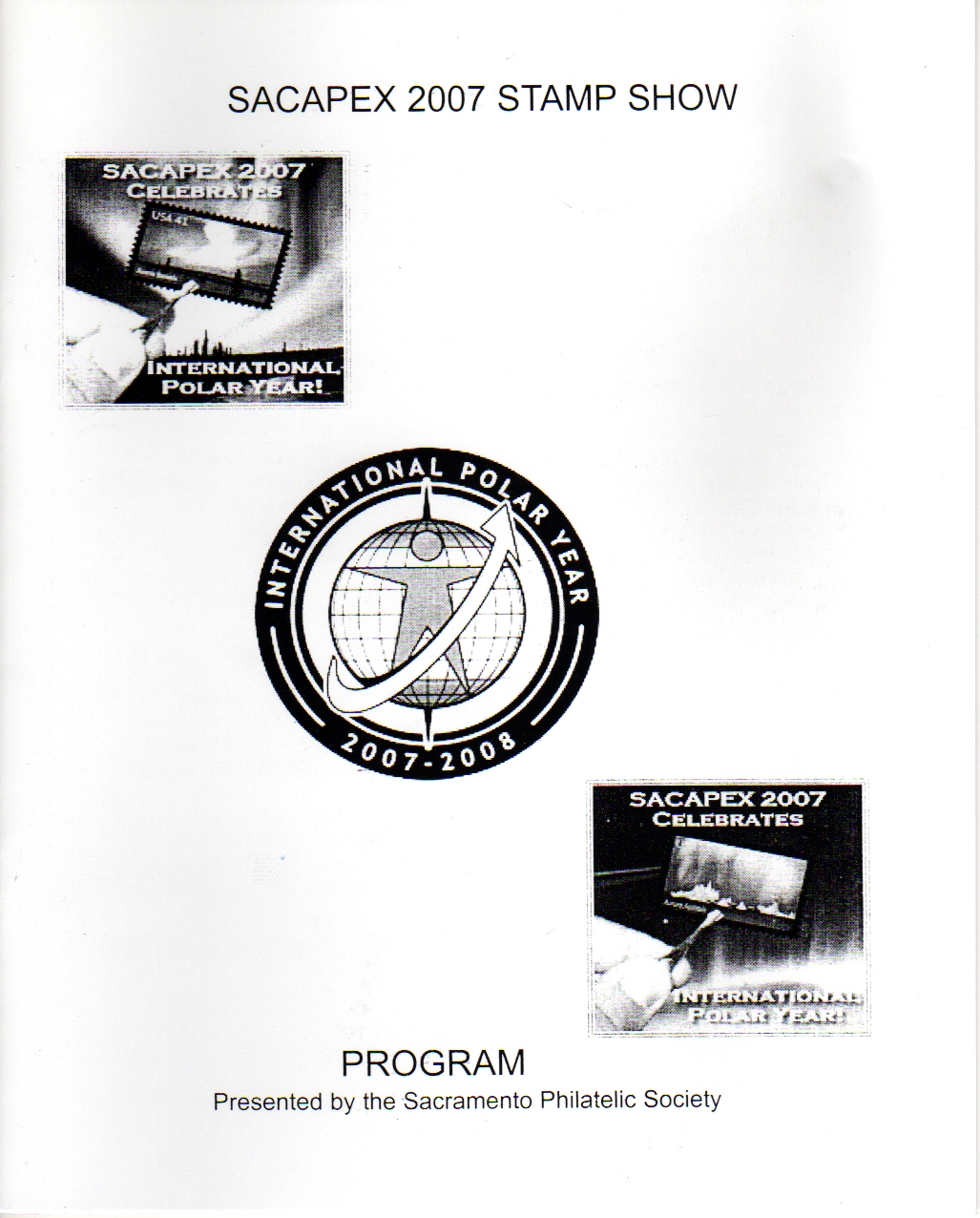14 Years of Glory: The 1974 Ethiopian People's Revolution
14 Years of Glory
This exhibit presents an overview of the stamps and rates that were used during the approximately 14 years of the Ethiopian people’s revolution – from 1974 the Provisional Socialist Government to the founding of the 1988 People’s Democratic Republic of Ethiopia.
Mint and used stamps for this time period are relatively easy to locate. Finding postally used covers for the various rate periods represents the greatest challenge for this time period. Prior to the take over by the Italians in the 1930s, the rates were relatively simple – generally a few rates for external and a few rates for internal postage along with additions for registration, advice of receipt etc. Post WWII, there were some 22-25 rates depending on continent and country plus registration, advice of receipt, printed matter etc. giving a potential for several hundred rates for each period. Due to the political climate and the relative lack of literacy in the country, covers are often under or over franked.
As the freedom movement and de-colonialization of Africa proceeded, Ethiopian were pressing for greater reforms. The Selassié government make token efforts at reform but never provided enough in the way of reforms to satisfy the populace. This discontent gave rise to a number of increasingly violent anti-Selassié factions. Eventually, the DERG (Provisional Socialist Government of Ethiopia) took over the local radio station and subsequently murdered the Emperor by suffocating him between two mattresses on between 26 and 27 August 1974. His remains were placed in a cement coffin placed under the kitchen of the house where he lived. The strongest figures to emerge from this take over was Mengistu Haile Mariam, an illegitimate grandson of Empress Zauditu. He ended up being a ruthless and bloody dictator as he moved Ethiopia from a monarchy to a a communist state. Mengistu cunningly played off the US against the Soviet Union in a bid to keep foreign aid flowing freely into Ethiopia. It was only when the US started to tie economic aid to human rights progress did Mengistu fully and publicly embrace communism. Prior to that, he embraced a populist socialism that was sweeping Africa at the time. Mengistu was forced to flee the country in 1991 with the fall of the Soviet Union and the cut off of Soviet aid to Ethiopia. To this day, he blames Gorbachev for “allowing” the Soviet Union to collapse, thus ending his rule in Ethiopia.
To my knowledge, Sacapex is the only show in the US at which 12 frame exhibits are allowed. Some day, I plan on expanding and changing the focus of my exhibit to cover the reign of Mengistu Haile Mariam,1974-1991. This change would, however, necessitate splitting this one exhibit into two or more exhibits.
 Left: Mengistu Haile Mariam
Left: Mengistu Haile Mariam
Awards: Vermeil & AAPE -Silver Award of Honor
Show: Sacapex 2006
Date: 4-5 November 2006
Place: Sacramento, CA
Palmares: Sacapex 2006 (Adobe PDF file)




Award: Vermeil
Show: Sacapex 2007
Date: 3-4 November 2006
Place: Sacramento, CA
Palmares: Sacapex 2007 (Adobe PDF)


